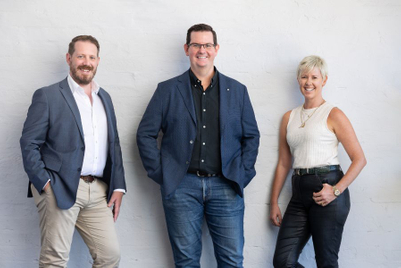
IBM's CMO Carla Piñyero Sublett feels that B2B marketing has lost its way. In a recent interview, the IBM SVP, who came aboard in February this year, contended that “B2B tech marketing is due a disruption" because everybody is "running the same plays" and "flooding the same channels, which is not really adding value to customers or decision makers".
Piñyero Sublett told Campaign US that she wants IBM and other B2B marketers to break the cycle of targeted, account-based marketing that they are over-reliant on, in favour of uncovering rich stories that already exist within their organisations.
“We forgot that our number one responsibility is to create relationships and add value," she said. "That's not going to happen by peppering LinkedIn inboxes, chasing with banner ads or flooding emails. I want to create more of a pull than a push by educating and inspiring customers through rich storytelling.”
We reached out to leaders in the B2B space in Asia to see whether they agree with these assertions.
Do you think you think B2B is too practical, and overlooks creativity?
Rhys Taylor, managing director, Gyro Asia Pacific:

On the contrary, over the past 10 years there have been two prominent trends in business-to-business marketing which suggest marketers have been relentless in building relationships and adding value to each customer touchpoint. The first has been an increasing awareness of the need to recognise the humanity of business customers as individuals and speaking to them in rich and humanly relevant ways—regardless of the product or service being promoted, or the audience segment or market being targeted.
And in addition to this topic being a regular focus in reports from the likes of Forrester and The LinkedIn B2B Institute, we’ve seen this live in the real world with brands like JLL (commercial real estate and investment) launching their global award-winning 'Stories of ambitions' campaign, and even just in the last week with the bold new brand launch and re-invention of the professional services firm NCS Group.
The second trend—which applies to the B2C practice in equal measure—is a move away from focusing on creating ambient brand image through traditional sponsorship and outdoor presence. Instead there's a focused effort on ensuring brands achieve ubiquity through some form of utility. This was truly led in Asia Pacific by WeChat, which was the first brand to define what a superapp could be for both businesses and consumers, and continues to be visible across the region.
Jo Chan Kue, commercial director APAC, Artefact:

On the contrary, since B2B is often very specific, 'precision' pretty much the fits in marketing this category. B2B has to be very precise in targeting the right audience and messaging. In these senses, creativity won't be at the same context of B2C, that we have to be lavish in graphics or emotional sentiments, but focus on how to make the brand messaging attractive to customers. Corporate look and feel will often be within the box (corporate guide), but my take is that B2B has to have its own definition of creativity, and it could be in their approach, platforms and messaging.
Luke Janich, CEO, Red2 Digital:

Taking the industry as a whole, it seems that practical solutions are preferred over creative ones. For us, the sweet spot is the combination of both: data-driven creativity. We are starting to see more B2B marketers leveraging data points with creativity to measure effectiveness. While many B2C brands have managed this seamlessly, there is a real opportunity for B2B brands that focus on insights rather than just specs and media.
What advancements have you seen in B2B marketing in APAC?
Taylor:
The fact is, marketers in Asia Pacific must address a greater number of languages, cultural and religious nuances, and varying degrees of technology adoption depending on where their business operates. This leads to a greater focus on measuring impact and success—which is why banner ads and emails will remain necessary at the bottom of the funnel—but it also breeds creativity.
And in the B2B space this creativity is often realised through partnerships. Where brands are willing to get out of their own way and recognise that their customers’ worlds will never stop for them in the way they want them to. But through a meaningful collaboration or merger, like when Gojeck and Tokopedia formed GoTo, their brand may be able to help speed up, smooth out, make safer, or improve their customers’ work and personal life in a way that creates brand affinity. (Our recent B2B Superpowers report breaks down how B2B marketers can target both the personal and the business needs of individual buyers.)
Janich:
There is a tendency to focus on targeted, account-based marketing in B2B. Nevertheless, we have seen some real advancements when ambitious clients and agencies come together. For us, the pandemic has fuelled the rise of content marketing—everything from bespoke webinars and blogs to emails and social media. These channels offer new opportunities for storytelling, which can support the full suite of PPC, SEO and lead generation.
Kue:
We have seen a lot of of them post covid that are rethinking how their marketing could be much closer to the end user (to gain insights for their R&D or product innovations). The trend is that they find value in partnering with big-data platforms in trend detection (such as Tmall Innovation Lab). Data modelling, such as lead scoring, has been growing, as it's proven to have better sustainability and performance in the long run. They extended their presence not only in search, but some of them also jump into the Douyin craze, for better brand awareness that could lead to immediate gathering of potential customers and even conversion.




.jpg&h=334&w=500&q=100&v=20250320&c=1)
.jpg&h=334&w=500&q=100&v=20250320&c=1)
.jpeg&h=334&w=500&q=100&v=20250320&c=1)
.jpg&h=334&w=500&q=100&v=20250320&c=1)
.jpg&h=334&w=500&q=100&v=20250320&c=1)
.jpg&h=334&w=500&q=100&v=20250320&c=1)



.jpg&h=268&w=401&q=100&v=20250320&c=1)




.jpg&h=268&w=401&q=100&v=20250320&c=1)
.jpg&h=268&w=401&q=100&v=20250320&c=1)